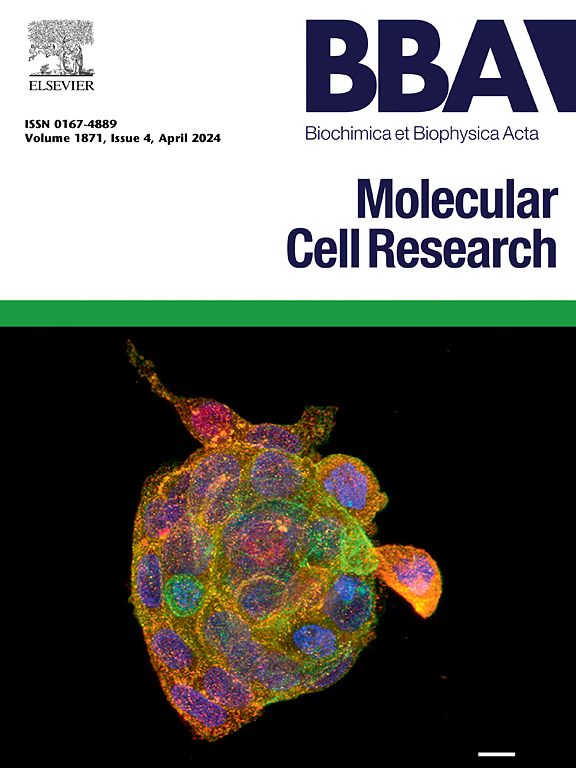M6A-mediated uc003pes.1 stability regulates proliferation and migration of human coronary artery smooth muscle cells via scaffolding STAT1 and USP10
IF 3.7
2区 生物学
Q1 BIOCHEMISTRY & MOLECULAR BIOLOGY
Biochimica et biophysica acta. Molecular cell research
Pub Date : 2025-07-15
DOI:10.1016/j.bbamcr.2025.120023
引用次数: 0
Abstract
Background
The uc003pes.1 has been identified as a potential diagnostic biomarker for coronary artery disease (CAD) and is associated with the risk of CAD. However, the precise function and intricate mechanism of uc003pes.1 in CAD remain elusive.
Methods
To elucidate the underlying mechanism we employed various techniques including RNA pull-down assays coupled with mass spectrometry analysis, RIP, RNA MeRIP, as well as luciferase reporter gene analysis.
Results
Overexpression of uc003pes.1 suppressed the proliferation and migration of HCASMCs. The upregulation of uc003pes.1 can be attributed to m6A modification mediated by the methylase RBM15. In terms of downstream mechanisms, uc003pes.1 acts as a molecular scaffold facilitating the interaction between STAT1 and the USP10, thereby impeding ubiquitination degradation of STAT1 and promoting phosphorylation levels at Tyr701 and Ser727, ultimately influencing HCASMCs' proliferation and migration.
Conclusion
Our study has discovered, for the first time, that uc003pes.1, regulated by m6A modification, functions as a molecular scaffold for STAT1 and USP10. This interaction plays a crucial role in regulating the proliferation and migration of HCASMCs, thereby offering novel insights into the diagnosis and treatment of CAD.

M6A-mediated uc003pes。1稳定性通过支架STAT1和USP10调控人冠状动脉平滑肌细胞的增殖和迁移。
背景:uc003pes。1已被确定为冠状动脉疾病(CAD)的潜在诊断生物标志物,并与CAD的风险相关。然而,uc003pes的精确功能和复杂机制。1在CAD仍然难以捉摸。方法:为了阐明潜在的机制,我们采用了多种技术,包括RNA下拉试验结合质谱分析、RIP、RNA MeRIP和荧光素酶报告基因分析。结果:uc003pes过表达。1抑制HCASMCs的增殖和迁移。uc003pes的上调。1可归因于甲基化酶RBM15介导的m6A修饰。在下游机制方面,uc003pes。1作为分子支架,促进STAT1与USP10相互作用,从而阻碍STAT1的泛素化降解,促进Tyr701和Ser727的磷酸化水平,最终影响HCASMCs的增殖和迁移。结论:我们的研究首次发现了uc003pe。1,受m6A修饰调控,作为STAT1和USP10的分子支架。这种相互作用在调节HCASMCs的增殖和迁移中起着至关重要的作用,从而为CAD的诊断和治疗提供了新的见解。
本文章由计算机程序翻译,如有差异,请以英文原文为准。
求助全文
约1分钟内获得全文
求助全文
来源期刊
CiteScore
10.00
自引率
2.00%
发文量
151
审稿时长
44 days
期刊介绍:
BBA Molecular Cell Research focuses on understanding the mechanisms of cellular processes at the molecular level. These include aspects of cellular signaling, signal transduction, cell cycle, apoptosis, intracellular trafficking, secretory and endocytic pathways, biogenesis of cell organelles, cytoskeletal structures, cellular interactions, cell/tissue differentiation and cellular enzymology. Also included are studies at the interface between Cell Biology and Biophysics which apply for example novel imaging methods for characterizing cellular processes.

 求助内容:
求助内容: 应助结果提醒方式:
应助结果提醒方式:


